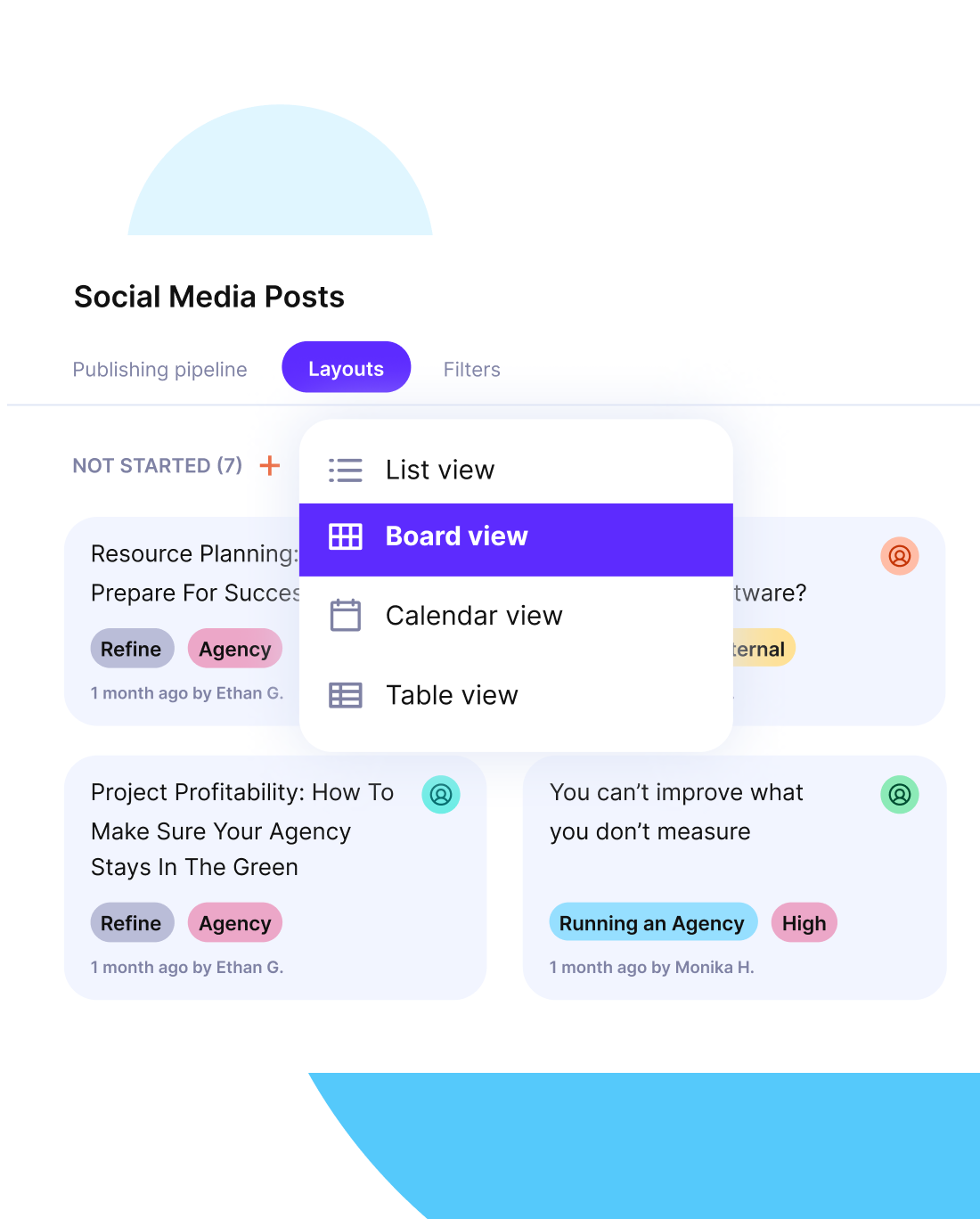What Are Professional Services Pricing Models – 2026 Guide
Many professional service providers default to the same pricing model for every project, even when it doesn’t fit the project scope or delivery method. This approach often backfires.
In this guide, we’ll walk through the most common professional services pricing models, explain where each one works best, and help you align your pricing with how you actually scope, deliver, and manage client work.
Key Takeaways
- Different pricing models for services solve different problems. The goal is to match the model to your delivery structure, client needs, and risk level.
- Hourly pricing fails when project management or meetings consume more time than actual production, even if the hours are accurately tracked.
- Fixed or value-based pricing models only work when your scope is clearly defined and expectations are locked in.
- The best pricing models support operating margin visibility across projects. Track and adjust based on real data, not client pressure.
What Are Professional Services Pricing Models?
Professional services pricing models are structured ways of charging clients for the work you deliver. These models define how you scope, price, and manage expectations across different types of projects.
They include hourly billing, fixed fees, retainer model, project-based pricing, and value-based approaches. Each model has its strengths and limitations, but the real difference comes from how well it matches your delivery method, team setup, and profit goals.
Why Your Pricing Approach Matters More Than You Think?
When your pricing model doesn’t match your scope or delivery process, it creates blind spots that increase your overhead costs.
For example, your team might deliver 60 hours of work under a 40-hour estimate to keep the client happy, without flagging the overage or recovering the cost. Multiply that across a few projects, and suddenly your margin disappears without anyone noticing.
If your pricing doesn’t reflect the actual work, clients push scope without noticing, costs rise quietly, and your team ends up doing more with less.
What Are the Main Pricing Models for Services?
The five most common pricing models for professional services are hourly billing, fixed fees, retainers, project-based pricing, and value-based pricing.
Each comes with specific risks and advantages depending on how you scope, deliver, and manage client work. In the next sections, we’ll walk through each model to help you understand where it fits and when it can cause problems.

1. Hourly Pricing
Hourly pricing works best for small, clearly scoped tasks where the time required is easy to estimate. It’s straightforward and easy for clients to understand because they pay for what gets logged.
Problems start when communication and project management time aren’t accounted for. For example, if a client expects frequent check-ins, planning sessions, or reviews, the billed time can balloon without delivering proportionate value.
Scope creep is also harder to push back on, since “just one more thing” feels small, but the hours add up quickly.
If you rely on hourly pricing, make sure to define what counts as billable work, set minimum increments, and regularly show clients how time is being spent. Otherwise, your team ends up busy without being profitable.
How to implement:
Use time-billing tools to track all billable and non-billable time in one place (so you can clearly show clients what they’re paying for). In Productive, you can set up hourly billing rates, tag work as billable or internal, and break down reports by client, task, or project.
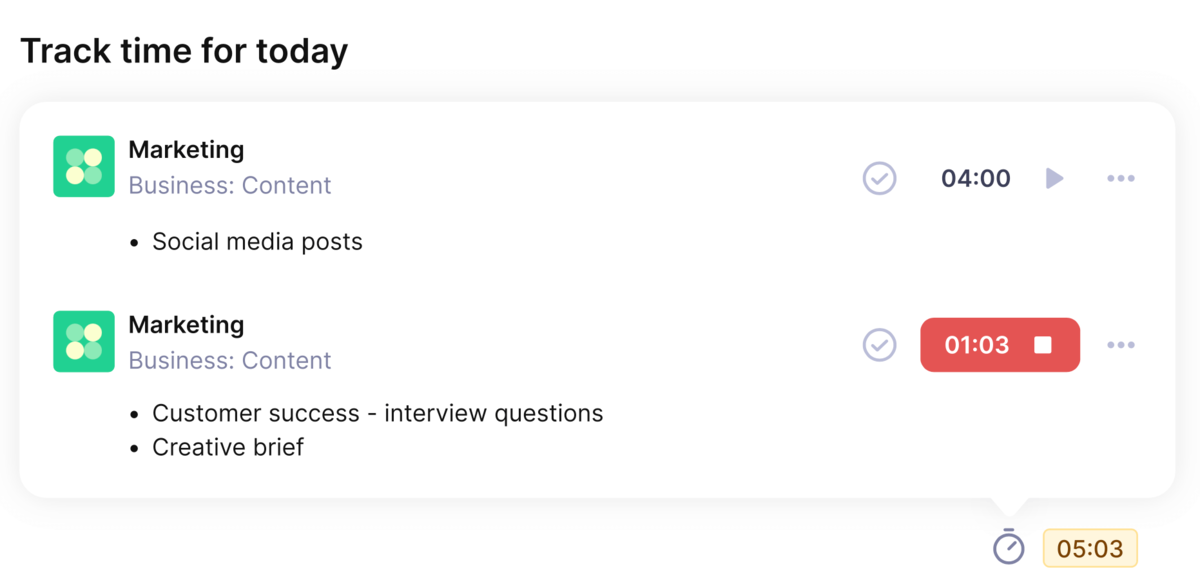
In Productive, you can easily track billable time and tie it directly to tasks.
2. Fixed Fee Pricing
Fixed fee pricing gives clients cost certainty. They know exactly what the project will cost, which helps with approvals and budget planning. For agencies, though, this model shifts risk in the opposite direction. If you misquote, underestimate the scope, or miss hidden costs, your profit takes the hit.
Fixed pricing works well for standardized services with predictable outcomes. For example, a design agency offering a predefined brand identity package can use fixed fees confidently because the scope is repeatable.
However, it tends to break down in exploratory or collaborative projects where requirements shift mid-stream. In those cases, you’re likely to lose revenue in case of revisions or new asks.
How to implement:
Start with a tightly scoped estimate. In Productive, you can create predefined services, assign time budgets to each, and clearly define what’s in and out of scope. During delivery, compare actual time against those budgets to stay ahead of overages.
If something slips, you’ll have the data to open a change request before margins vanish.
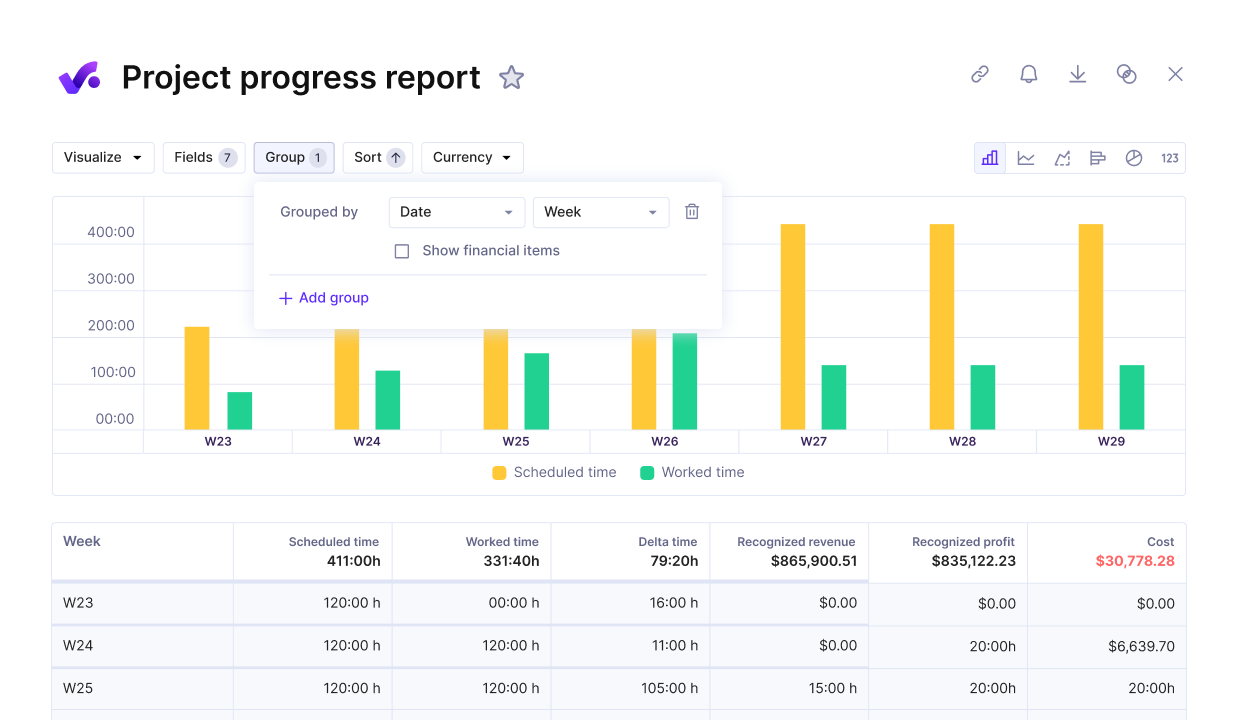
Use Productive to get real-time reports on project progress and the time spent.
3. Retainer Pricing
The retainer pricing model gives agencies predictable income and clients ongoing access to your team. It’s often used for long-term client relationships where work happens continuously. This model is frequently underpriced or misaligned with actual output.
When scope isn’t tracked tightly, teams end up delivering more than they charge for. If you deliver more than your value proposition, you’re chipping away at your revenue.
Retainer-based pricing works well for services like consulting, support, or monthly creative work where demand is steady. Retainer agreements become a problem when clients overuse the access, shift priorities without notice, or push scope boundaries without triggering a new agreement.
How to implement:
Use Productive to define service categories and time budgets within a retainer. This way, your team logs hours against what’s actually covered, and you can track whether you’re consistently overdelivering.
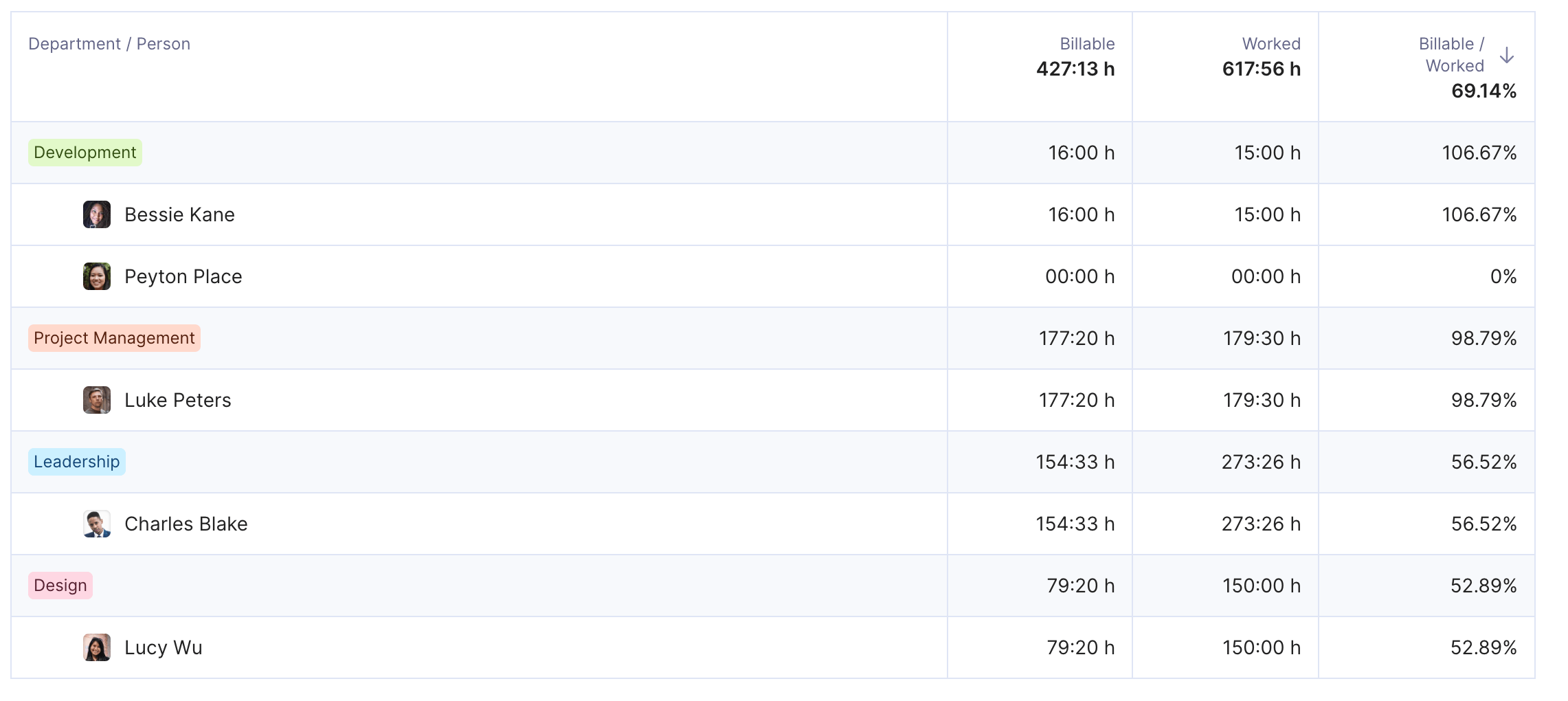
Get reports on team utilization and the time spent.
4. Project-Based Pricing
Project-based fees are ideal for work that’s delivered in defined phases or milestones. It allows you to break a larger engagement into smaller scopes, each with its own pricing and approval cycle. This fee structure gives clients clarity and reduces risk for both sides.
They only commit to what’s next, and you stay aligned with real project progress.
This model works well for product development, rebranding, or platform migrations where clear checkpoints exist. It struggles in open-ended engagements or when clients shift direction mid-project without re-scoping.
How to implement:
In Productive, you can create separate budgets for each phase and assign services, deliverables, and timelines accordingly. This lets you track profitability at each milestone, adjust for changes without rewriting the entire contract, and bill only once a phase is complete and approved.
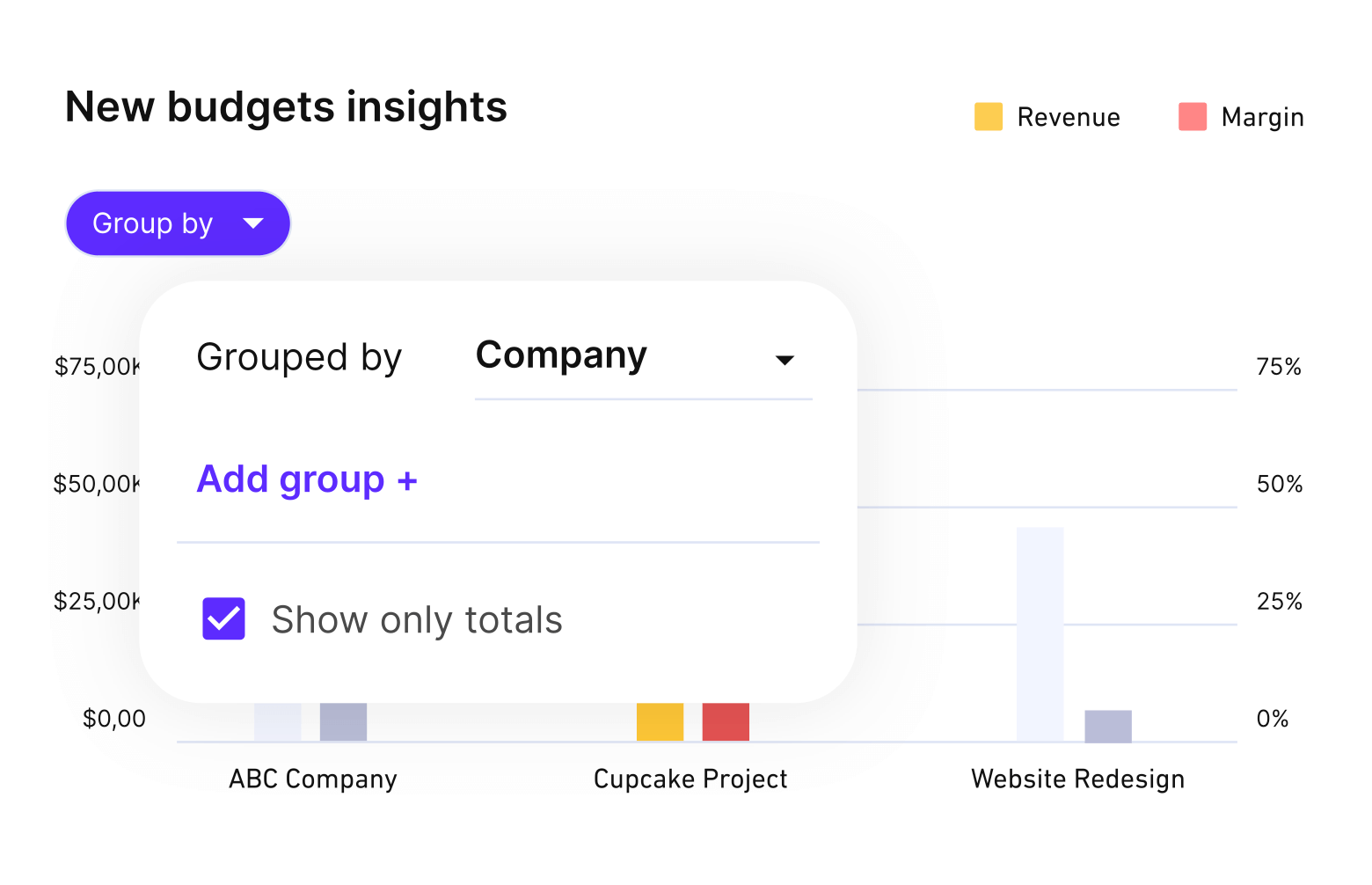
Automatically update your project budgets if the scope changes.
5. Value-Based Pricing
Value-based pricing ties your fee to the outcomes you help your client achieve, not the hours you work or the tasks you complete. Instead of charging based on time or deliverables, you price the engagement according to its strategic value.
Value-based fees model works best for high-trust, high-impact projects where the value to the client is clearly measurable (like increasing revenue, reducing churn, or launching a major product).
It’s not a good fit for clients who view your work as interchangeable or don’t have clear success metrics.
How to implement:
Scope value-focused deliverables inside estimates and track them across phases. Use task and budget tracking to connect work back to outcomes. When it’s time to justify pricing, you’ll have both the context and the numbers to support your value-based fees.
Implement and track your pricing models with Productive
How Do You Choose the Right Pricing Model (Best Practices)?
The right pricing model depends on your scope, delivery method, and risk level. A simple website redesign or market research may suit a fixed fee, while an ongoing strategy engagement might call for retainer pricing or a value-based fees approach.
Choosing well means evaluating how much risk you’re absorbing, how predictable the delivery is, and how closely your pricing reflects the actual value and effort involved.
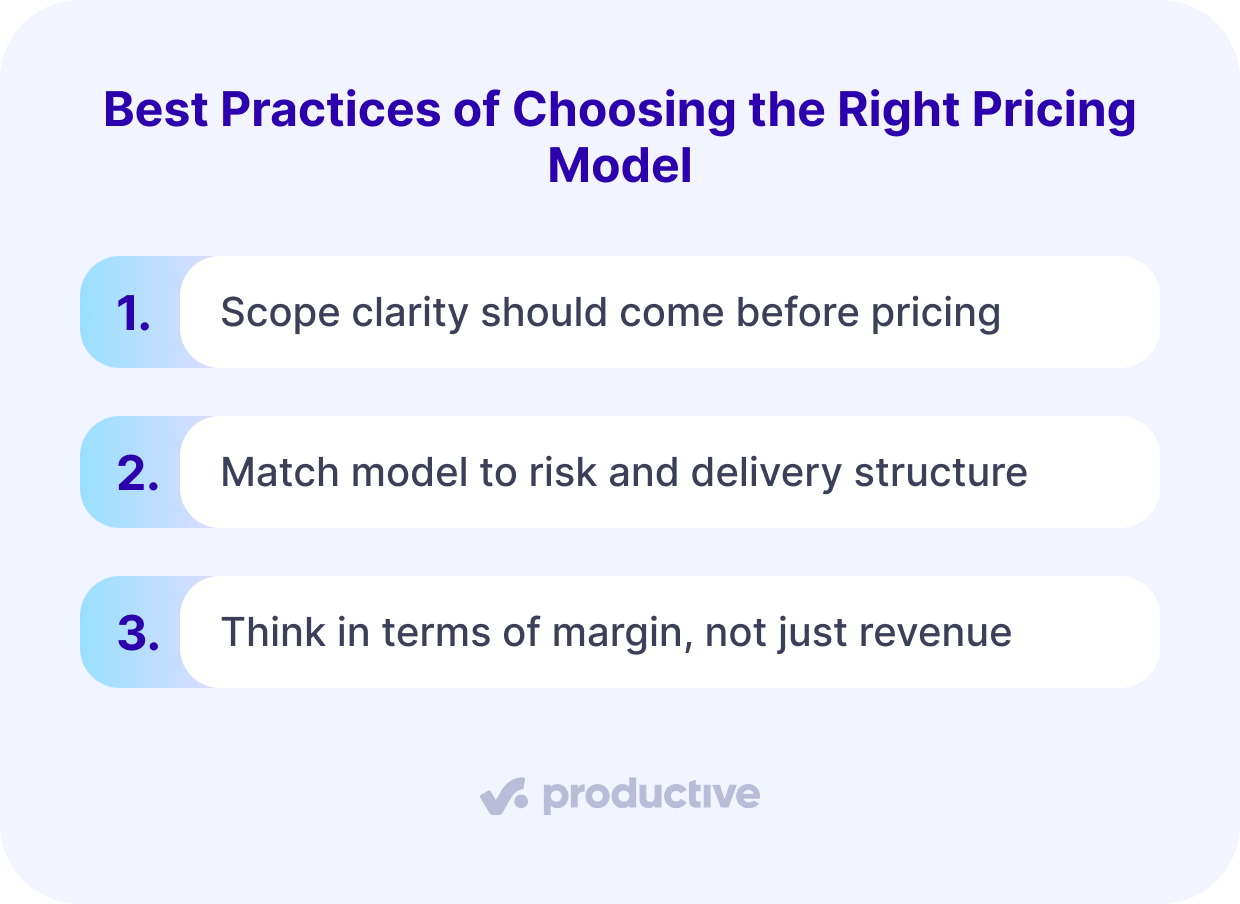
Tip 1: Scope clarity should come before pricing
Scoping before pricing protects your margins and your team. If you quote a fixed project-based fee before understanding the full scope of work, you’re guessing, and that guess usually drains your revenue stream.
One missed assumption, like thinking the client will provide assets or content, can turn a profitable engagement into a money hole. A reliable way to get clarity is to use an internal checklist that covers project type, expected deliverables, number of revisions, client-side dependencies, and non-billable coordination time.
For example, if your team is delivering a full rebrand, that checklist should confirm whether you’re also expected to handle naming, copywriting, and stakeholder workshops.
In Productive, you can scope out services and phases directly in the scenario builder. The feature allows you to quickly prototype different budget and deal scenarios and evaluate their costs, profitability, and resource needs.
Tip 2: Match model to risk and delivery structure
Some pricing models come with more risk than others, and how much risk you’re willing to take on should shape your pricing strategy.
For example, fixed price projects are higher risk for agencies. If you underestimate the time needed, you’re locked into the fee regardless of actual effort. That makes this model best suited for predictable work with low variance in delivery.
In contrast, retainers or hourly billing shift some of that risk back to the client. These models work well when project needs are likely to evolve or when the scope isn’t fully defined upfront.
A simple way to assess risk: ask whether the work is repeatable, how many unknowns exist, and how much room there is for client-driven change. The more unpredictable the project, the more flexible your pricing model should be.
Tip 3: Think in terms of margin, not just revenue
It’s easy to assume that a high project fee equals success. But unless you’ve estimated costs carefully, that number may hide low or negative margins.
Before finalizing any pricing model, forecast the total cost of delivery, including billable hours, meetings, reviews, and any client-specific overhead. Then compare that to your planned price. If your margin falls below your target threshold, something needs to change: the scope, the delivery model, or the fee.
What Are Common Mistakes of Service Pricing (+ How To Avoid Them)?
The most common mistakes in service pricing are quoting before the scope is ready, underselling long-term retainers, and using hourly billing for clients who require high-touch collaboration. They lead to delivery strain, client misalignment, and shrinking margins across active projects.
In the sections below, we’ll map them out and teach you how to solve them.
Mistake 1: Guessing pricing before the scope is ready
Quoting without a scoped plan almost always leads to misalignment. You price based on assumptions, but once delivery starts, you discover missing content, extra rounds of feedback, or last-minute add-ons.
This forces the team to either absorb the overages or renegotiate mid-project, both of which damage trust and profit.
How to avoid:
Use a scoping-first process. Before any pricing conversation, send a short explainer to the client outlining how scope comes first, pricing second. Keep prices hidden until the scope is approved.
This shows professionalism, builds trust, and prevents rushed, inaccurate quotes.
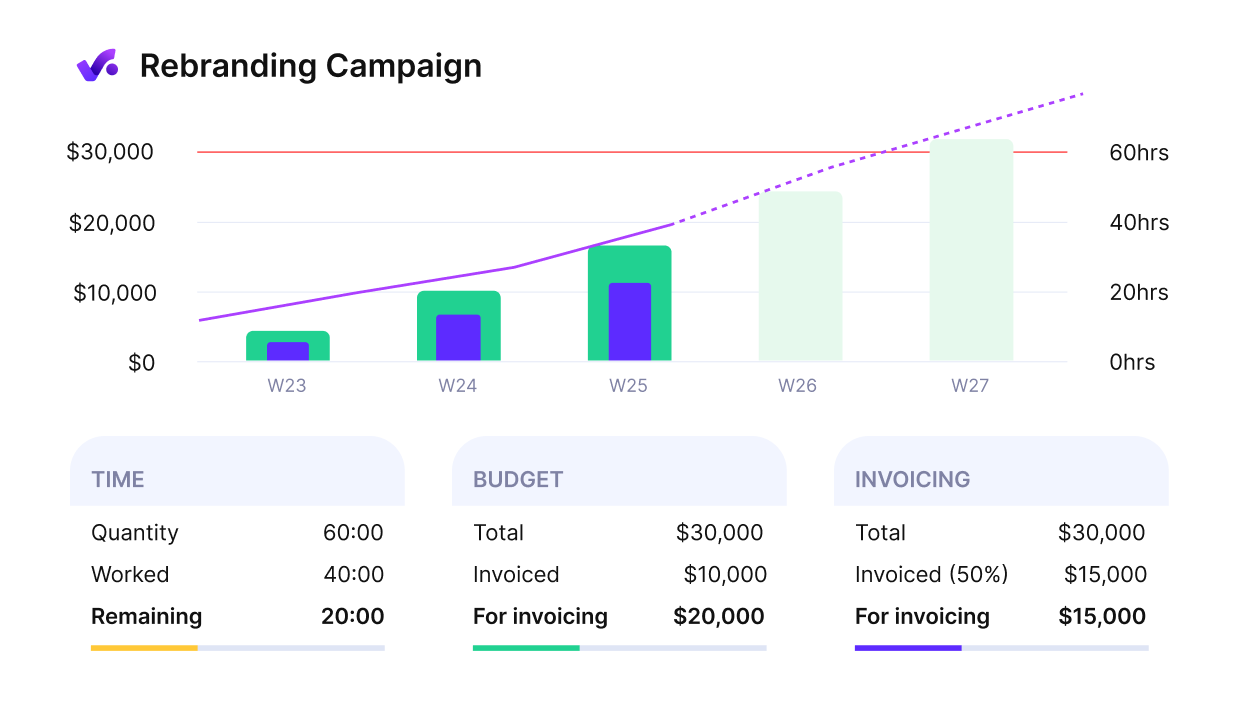
Avoid budget overruns and mitigate in time with Productive.
Mistake 2: Underselling long-term retainers
Retainers are often scoped once and left untouched. Over time, clients tend to expect more output for the same monthly fee.
Without visibility into what’s actually being delivered, teams fall into the trap of overdelivering to maintain the client relationship. This erodes profit margins and stretches delivery capacity across multiple accounts without a clear way to rebalance.
How to avoid:
Use time tracking and service-level reporting to compare what was promised to what was delivered.
In Productive, you can define what’s included in a retainer, then tag work accordingly. If clients consistently exceed their usage, it gives you the data to renegotiate scope, introduce tiered pricing, or move them to a project-based model.
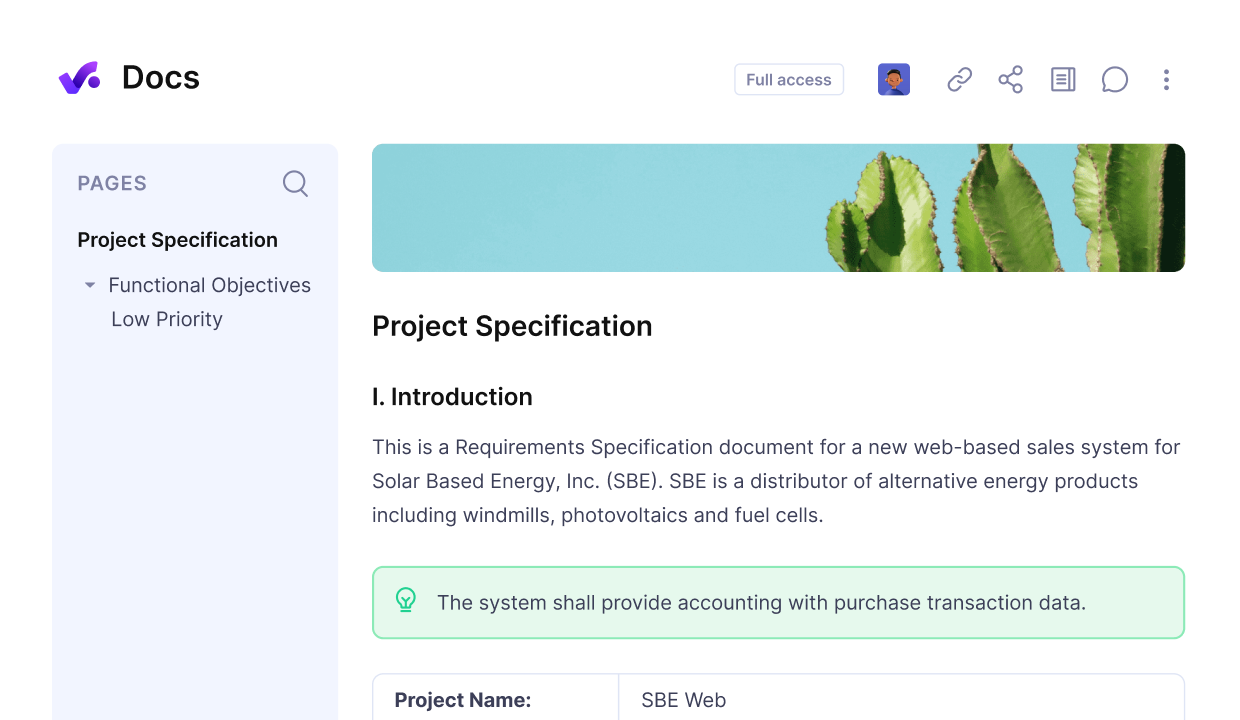
Include the complete project scope with all deliverables in centralized documentation that you can share with your clients.
Mistake 3: Hourly billing backfires with high-communication clients
Hourly billing creates tension when clients expect ongoing access, collaboration, and check-ins. The more communication they need, the more your team logs time, and the more likely the client is to feel nickel-and-dimed.
This model breaks down when there’s no clear separation between execution and relationship management. For example, if your strategist spends 10 hours a week on client calls and planning sessions, but the client only expects to pay for design output, you’re left eating hours or damaging the customer experience.
How to avoid:
Use project-based or blended pricing when you know a client needs regular involvement. In Productive, track how much time is going to internal vs client-facing work during early projects, and use that data to create tiered pricing packages that reflect both sides of delivery.
How to Track If Your Pricing Model Is Working?
You’ll know your pricing model works if you’re hitting margin targets, meeting expectations, and delivering on scope. But you can’t manage what you don’t measure. The next few sections will show you how to use delivery data to evaluate the health of your pricing strategy.
1. Check profit margins per project type
To assess how well each pricing model performs, start by grouping past projects by pricing structure (hourly, fixed fee, retainer, or project-based). Then calculate the average profit margin for each group. This helps you spot which models consistently protect your margin and which ones tend to underperform.
In Productive, you can use built-in margin reporting to view profitability at the project level. This gives you a clear view of how each model behaves in practice, not just on paper.
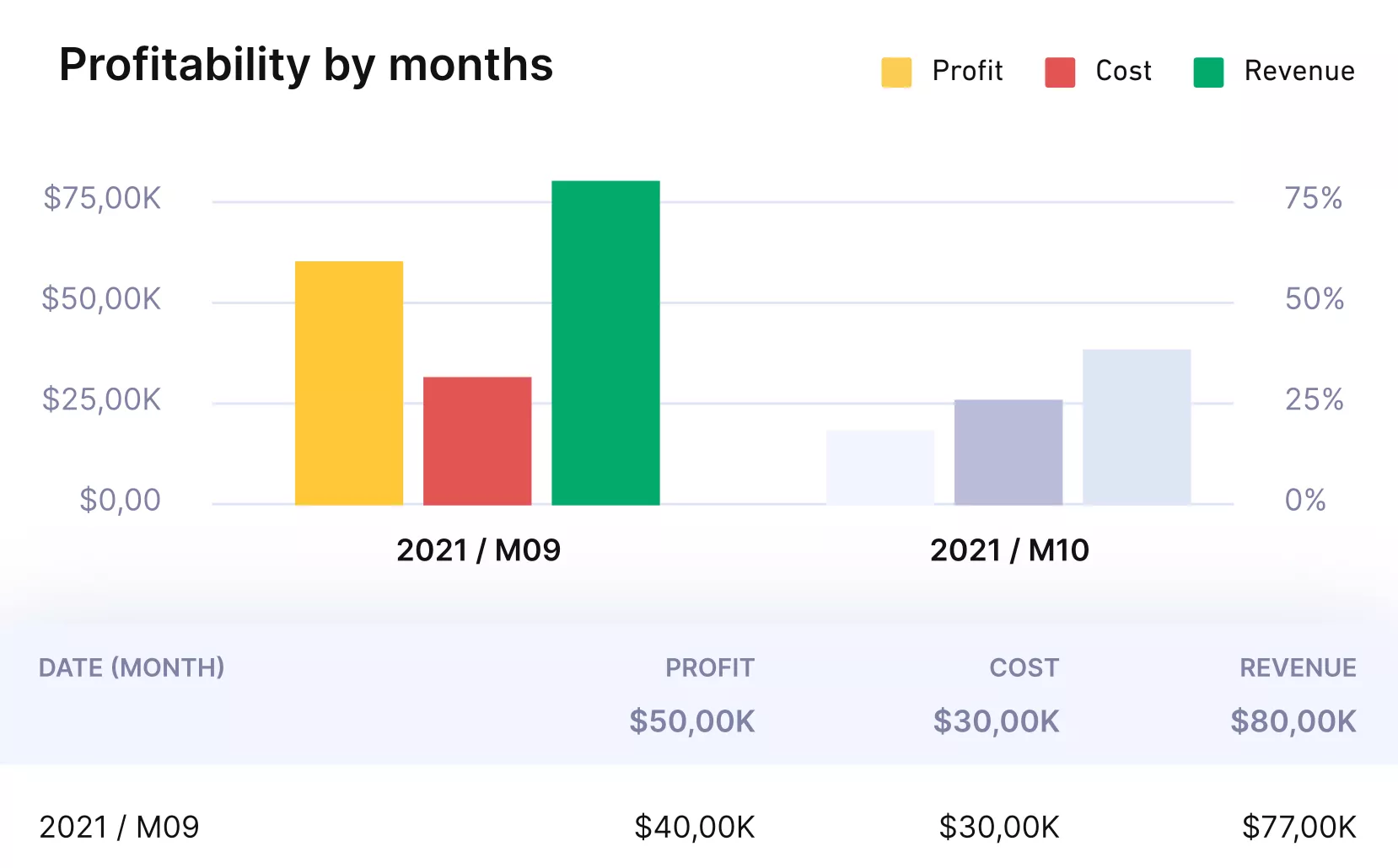
Compare profitability, costs and revenue in real-time.
2. Compare planned vs actual delivery
Tracking planned vs actual delivery is one of the fastest ways to spot profit margin leaks. If your team regularly exceeds the initial estimate, it’s a sign that the scope wasn’t defined tightly enough or the effort was underestimated.
Start by comparing the time and cost estimates in your proposal to the hours and internal costs logged during delivery. If actuals consistently exceed estimates, review your scoping process and consider adding buffer time to high-variance tasks.
Over time, you can build more accurate estimates using historical data tied to similar project types or client profiles.
3. Track client satisfaction by pricing model
Client satisfaction with pricing often comes down to whether the model aligns with how they experience the work. If the model seems unpredictable or doesn’t match the type of support they need, you’ll see pushback on invoices, requests for clarification, or late-stage renegotiations.
Ask clients during or after a project if the pricing felt clear and fair. In Productive, you can tag time by activity type and compare actual usage to what was scoped. If clients consistently underuse or overuse certain services, that data can guide changes in how you price, scope, or present options.
Conclusion: Pricing Is a Delivery Decision
Pricing tactics aren’t just about billing structure. They’re a reflection of how your team works, how risk is shared, and how value is delivered.
If you want pricing to be more predictable, more profitable, and easier to manage across clients, you should use a project management platform like Productive.
Book a short demo to and get started today.
Connect Pricing to Real Delivery Data with Productive
See how every pricing model affects your margin. Productive links estimates, budgets, and actuals in one place so you always know where you stand.
